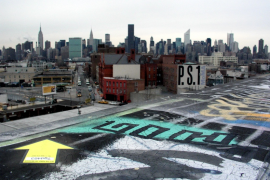One of the ideas behind this research project has been to have a dialogue with mainstream cultural industries about practices that until now have existed in heritage or experimental media art spaces. As researchers and artists we’re pretty good at getting on with making extraordinary things and, occasionally, having brilliant ideas, but we’re traditionally not so good at giving them wings in the world beyond the academy. Long experience of what used to be called “knowledge exchange” teaches me that for it to be effectively achieved you need to bake in partnership from the start of a project. You don’t wait to find some results before you take them out to road test, its much better to co-design them along the way with the people who might have a use for them. On this project part of our research problem is how to scale work that already constitutes a field, how to shift the perimeters of the possible for mainstream publishing.
So we have convened an advisory board who met last week on December 1 for the first time; the board consists in 11 representatives from the publishing, writing, and arts community. We’ll get them all listed up on this site soon. They’re brilliant interlocutors for our project and it was a pleasure to share a morning with them. We asked what they wanted from the research. In no particular order they said:
- A how-to-do-it guide that would include information on workflows and platform choices. This is already on our to do list, and follows on from our experience of producing the Pervasive Media Cookbook.
- Some sense of what formats and frameworks are available for authors and publishers; at best this would be a platform that authors can use to write in, so that they can start to include the potential reader’s context into their imaginative process. Our Calvium partners are keen to get as far down this road as they can.
- Some suggested solutions to the problem of discovery, how can potential readers find that works of ambient literature are embedded in their environment? This is a basic but knotty and intractable problem. A good challenge!
- A solution to the question of locative and portable works; this is an old problem for us. A strictly locative work can only be experienced in one location (a specific walk, church, or gallery etc.), but in reality there’s probably not much more than passing interest from publishers and authors in a form that’s not as portable as the book. It needs to be available in more than one location. This is a really great challenge that goes to the heart of thinking about “ambience” and the grammar of how literature can either be suggestive of certain contexts or able to scrape contextually specific data into its story world.
- Following on from that some suggestions or examples as to how writers can include not only the contextual awareness of the device in their work but also data streams from other APIs such as local weather or news. This is a great challenge for our authors that so far hasn’t figured in our thinking but we’re excited to pursue if we can.
- We then moved in to talking about our research with readers and users. How do readers and users describe their ambient literature experiences? This data might offer a really useful everyday language for understanding how to market and promote this work. This is a useful method that we’ve previously used to bring experimental work into consumers everyday genre language.
- Some longitudinal audience response research that showed how readers’ experiences are cultivated over time. This suggestion has to do with understanding how users adopt and adapt to new forms as they come onstream; whilst we can identify a cohort of users to focus group with our project is a bit too short to make a proper longitudinal study.
- User responses correlated to age; there was some interest in beginning to segment the potential market for these works and age seemed like an important place to start.
- Challenging the echo chamber of social media by publishing work that raises difference and otherness in the public data domain. This is another great challenge and raises the question (that we’re not so far considering) of making ambient participatory by affording the public the chance write into the pieces. This is untapped potential for us — though artists have been playing with it in the field for a very long time, see for instance Urban Tapestries. Our approach has been to commission authors with some feel for the creative territory that gives us the opportunity to develop the grammar and potential of the form. In different ways all three of them will be releasing challenging creative stories into the public data realm. But certainly in our “handbook” above we could include some discussion of participatory techniques.
We’ll continue to talk with our advisors and incorporate these questions into our agenda where we can. There’ll be a chance to progress them at our next formal session that will be a mid point reporting next year. The crunch will come nearer to the end of the project in 2018 when we plan ways to take our findings into new spaces where they can become part of more widespread commissioning policies.
—Jon Dovey







